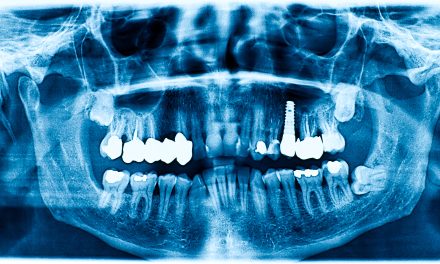Choosing the best dental implants depends on several key factors, including the type of implant and materials used. Titanium implants are often considered the best due to their high success rate and compatibility with bone. Their ability to integrate with bone makes them a popular choice among both patients and dentists.
The success of dental implants is also influenced by the brand’s reputation and the quality of its products. Not all implants are created equal, and brands known for high-quality standards tend to offer more reliable outcomes. It’s essential for individuals to discuss with their dental professionals which brand and type may suit their individual needs.
Cost plays a significant role in the decision-making process as well. Dental implants can vary widely in price, depending on the materials and the complexity of the procedure. Patients should weigh the cost against the long-term benefits and durability of the implant type they choose.
Key Takeaways
- Titanium implants are often considered the best due to their compatibility with bone.
- Implant quality and brand reputation significantly impact success rates.
- Cost considerations play a vital role in choosing dental implants.
Understanding Dental Implants
Dental implants are artificial tooth roots placed into the jaw to support replacement teeth. They provide a stable foundation for fixed or removable teeth. Implants are crafted from titanium due to its strength and compatibility with bone tissue.
There are various types of dental implants. The most common is the endosteal implant, which is placed directly into the jawbone. Another type is the subperiosteal implant, placed under the gum but above the jawbone, often used for patients with shallow bone structure.
The success of dental implants depends on several factors. The quality of the implant and the condition of the jawbone play significant roles. Additionally, the experience of the dental practitioner and the patient’s oral hygiene can impact outcomes.
Immediate placement implants allow for a quicker process. A tooth can be extracted, an implant inserted, and a temporary crown placed in just a few hours. This approach can be beneficial for those looking to maintain their smile without delay.
Patients’ perceptions and awareness also influence dental implant success. A study showed that knowledge about the benefits and process of implants can help in making informed decisions.
In summary, understanding the basics of dental implants involves recognizing their purpose, types, and the factors affecting their success. With advancements in technology, dental implants have become a popular choice for tooth replacement.
Types of Dental Implants
Dental implants come in several types, each suited for different situations. Understanding the unique features of each can help in choosing the best option. This section explores endosteal, subperiosteal, and zygomatic implants with a focus on their structure, placement, and specific uses.
Endosteal Implants
Endosteal implants are the most common type, placed directly into the jawbone. They are typically made from titanium and shaped like small screws or cylinders. This type provides a strong foundation for artificial teeth and is preferred when patients have enough healthy jawbone.
Here, the implant acts as a root, supporting a tooth or a bridge. The healing process involves osseointegration, where the bone integrates with the implant.
The suitability of endosteal implants depends on the density and volume of the patient’s jawbone. Bone grafts might be necessary if the bone is inadequate, making this option less suitable for everyone. However, for those with sufficient bone, endosteal implants offer a stable and long-lasting solution.
Subperiosteal Implants
Subperiosteal implants are placed on or above the jawbone, but under the gum tissue. They are used primarily for patients who do not have enough healthy bone and cannot or do not want to undergo a bone augmentation procedure.
These implants consist of a metal frame fitted on top of the jawbone. Eventually, the metal frame becomes fixed to the bone as the gums heal. Posts attached to the frame protrude through the gums, providing anchor points for artificial teeth.
While less common than endosteal implants, subperiosteal implants can be an effective solution. Candidates include those who lack sufficient bone density in their jaw and want to avoid additional surgeries.
Zygomatic Implants
Zygomatic implants are less common and used mainly for patients with significant bone loss in the upper jaw. Unlike other implants, they are anchored in the zygomatic bone or cheekbone rather than the jawbone. This makes them suitable for individuals who cannot benefit from traditional implants due to severe bone loss.
These implants are much longer than endosteal or subperiosteal ones and require specialized procedures and expertise. They are often used in cases where bone grafts or sinus lifts are not feasible or preferred.
Zygomatic implants offer a viable alternative for patients with upper jaw issues, reducing the need for extensive bone surgery. They need careful planning and should be performed by experienced dental professionals for optimal results.
Materials Used in Dental Implants
Dental implants rely on specific materials for their strength and compatibility with human tissue. Titanium and zirconia are the most common choices, each having distinct advantages.
Titanium Implants
Titanium is widely recognized for its strength and biological compatibility. This material bonds well with bone in a process called osseointegration. This connection makes titanium implants a strong and stable choice. The history of titanium use in implants is long-standing, adding to its credibility.
One key feature of titanium is its ability to resist corrosion. This quality extends the life of implants, making titanium a durable option. Some patients may be concerned about allergies, but reactions are rare and often manageable by healthcare professionals.
Titanium implants are available in various shapes and sizes, making them adaptable for individual needs. This adaptability proves valuable in complex dental cases. Most importantly, titanium’s proven success rate offers patients a reliable option for dental restoration.
Zirconia Implants
Zirconia implants are a ceramic alternative to titanium. Known for their natural white color, they offer aesthetic benefits, blending well with natural teeth. This makes them appealing to those concerned with the visual aspect of their smile.
Biologically, zirconia exhibits excellent compatibility. It does not conduct heat or electricity, making it a comfortable choice. Furthermore, zirconia implants are metal-free, an important factor for individuals seeking non-metal options due to allergies or personal preferences.
Zirconia is also resistant to corrosion and fracture, ensuring longevity. Its growing popularity reflects advancements in ceramic technology, providing an effective alternative to traditional metal implants. With increasing data supporting their use, zirconia implants present a trustworthy choice for many patients.
Factors Determining Implant Choice
Choosing dental implants involves several important factors. These include the condition of the patient’s jawbone, the need for aesthetic results, and any existing medical concerns. Each factor can significantly influence the type and success of an implant.
Bone Density and Volume
Bone density and volume are crucial for dental implant success. Strong and adequate bone supports the implant and aids in integration. Type I bone, with high density, has the highest implant survival rate.
When bone density is low, augmentation procedures like bone grafts may be necessary. Surgeons evaluate the jawbone using diagnostic imaging to determine the feasibility of implant placement. Ideal cases involve a solid bone environment to ensure stability and longevity of the implant.
Aesthetic Considerations
Aesthetic considerations play a vital role in implant selection, especially for front teeth. Implants must blend seamlessly with natural teeth in color and shape. Surgeons often customize the implant to match these characteristics, ensuring a harmonious look.
The gumline is also carefully studied to prevent any unsightly gaps or unevenness. Patients often desire implants that improve their smile’s appearance without drawing attention. Thus, the choice of implant is guided by both functionality and visual appeal.
Medical History
A patient’s medical history impacts implant choice significantly. Conditions like diabetes or osteoporosis may affect healing and integration. Smoking is another factor that can compromise implant success, increasing the risk of complications.
The dentist reviews medications the patient is taking, as some can affect bone health. Detailed health assessments help in planning a safe and effective implantation. The patient’s overall health should support healing, ensuring the implant remains stable over time.
Implant Brand Quality and Reputation
Dental implant brands vary in quality and reputation. Well-known brands often invest in research to improve their products, ensuring better results. This focus on quality often leads to higher success rates and longevity of the implants.
When choosing an implant, it’s important to consider both the material and the manufacturer’s history. High-quality materials are crucial for the implant’s success and durability. Brands that consistently deliver reliable products are more likely to have a good reputation among dentists.
Factors Influencing Brand Reputation:
- Clinical Trials: Brands that publish results of longitudinal trials can demonstrate effective outcomes.
- Manufacturer Size and Experience: Large and experienced manufacturers might offer more reliable products.
- Innovation and Research: Continuous innovation indicates a commitment to improving implant technology, which boosts trust.
Patients should discuss with their dental professional to understand which brands align with their specific needs. Evaluating these aspects helps in selecting the most suitable implants for long-term success. The right brand can make a significant difference in the overall effectiveness of dental treatments.
Success Rates of Different Implants
The success of dental implants varies based on several factors like material and surface design. Titanium implants are widely used due to their high success rates, often above 95%. They are known for their durability and compatibility with bone.
Zirconia implants are gaining attention for their natural appearance and biocompatibility. A study reported a five-year success rate for Zirconia to be quite promising, especially with improved surface textures.
Implant surface modifications play a key role in success. Rough surfaces increase bone integration, enhancing stability. Machined surfaces, as highlighted here, also contribute to high success rates.
Certain factors, such as bone type and implant design, also impact outcomes. Type I bone offers the best success rates for implants due to its density. According to a retrospective study, bone quality and implant position remain crucial indicators of implant longevity.
Different shapes and designs aim to enhance primary stability. Screw-shaped implants, for example, are developed to improve fixation. These designs help increase the overall success rates of dental implants by adapting to various anatomical conditions.
Cost Considerations for Dental Implants
The cost of dental implants can vary widely. Several factors influence the price, including location, dentist’s experience, and specific procedures involved.
Typically, dental implants are priced between $3,000 and $5,000 per tooth. This includes the implant, abutment, and crown. However, some patients may require additional procedures such as bone grafts, which can increase the overall expense.
Different types of implants may also affect the cost. For example, some systems claim to perform better and thus charge a premium. Certain countries have a greater use of implants due to factors like an aging population.
Potential Costs:
- Initial Consultation: $100 – $200
- Bone Grafting: $300 – $3,000
- Implant Placement: $1,000 – $3,000
- Abutment/Crown: $500 – $2,000
It is crucial for patients to consult with their dentist to receive a detailed breakdown of the costs. Many clinics offer financing plans to help manage payments over time.
Some insurance plans might cover part of the cost, especially if the implant is deemed medically necessary. Patients should check with their insurer to understand what is included.
Post-Implantation Care and Maintenance
Caring for dental implants is crucial for their long-term success. Good hygiene and regular check-ups are essential to prevent complications.
Daily Cleaning Routine:
- Brush Twice Daily: Use a soft-bristled toothbrush to clean implants gently.
- Flossing: Floss at least once a day to remove food particles and plaque.
- Mouth Rinse: Consider using an antibacterial mouthwash to reduce bacteria.
Regular Dental Visits:
Patients should visit their dentist every six months. These visits help monitor the condition of the implants and ensure they remain in good shape. Adjustments and professional cleaning may be required.
Signs of Possible Issues:
- Redness or Swelling: This may indicate infection or irritation around the implant.
- Loose Implants: If an implant feels loose, prompt dental attention is necessary.
- Persistent Pain: Ongoing discomfort should be assessed by a professional.
Maintaining oral health can help prevent post-implantation complications. Diabetes and other health conditions may affect the success of dental implants, so managing these conditions is important.
Proper care and regular monitoring play a significant role in the success of dental implants.
Frequently Asked Questions
When considering dental implants, factors like material, cost, success rates, and aesthetics play a significant role. Options like titanium and zirconia offer varying benefits, and different implant types cater to unique needs.
What factors should be considered when choosing the type of dental implant?
Choosing a dental implant involves examining the material, jawbone density, and patient health. Titanium is strong and integrates well with bone, while zirconia is an alternative for those with metal allergies.
How do the success rates of different dental implants compare?
Dental implants generally have high success rates. Studies show titanium implants perform well due to their osseointegration capabilities. Zirconia implants are catching up, offering comparable success rates in suitable cases.
What are the pros and cons of titanium versus zirconia dental implants?
Titanium implants are known for their strength, durability, and great integration with bone. Zirconia implants offer an aesthetic advantage due to their tooth-like color and are a non-metal option, reducing allergies.
How does the cost of single-tooth dental implants vary by type?
The cost of dental implants can vary based on the type and material. Titanium implants are usually more widely used and can be less expensive, while zirconia implants might incur a higher cost due to material and technique.
What are the main differences between endosteal and other dental implants?
Endosteal implants are the most common and are placed directly into the jawbone. Other types, like subperiosteal implants, rest on top of the bone and are less commonly used, typically for those with insufficient bone height.
What should be expected in terms of realism and aesthetics from top dental implant options?
Top dental implant options offer great realism and aesthetics. Titanium implants provide strong foundations while mimicking natural tooth function. Zirconia implants offer both strength and a natural appearance due to their white coloring.















